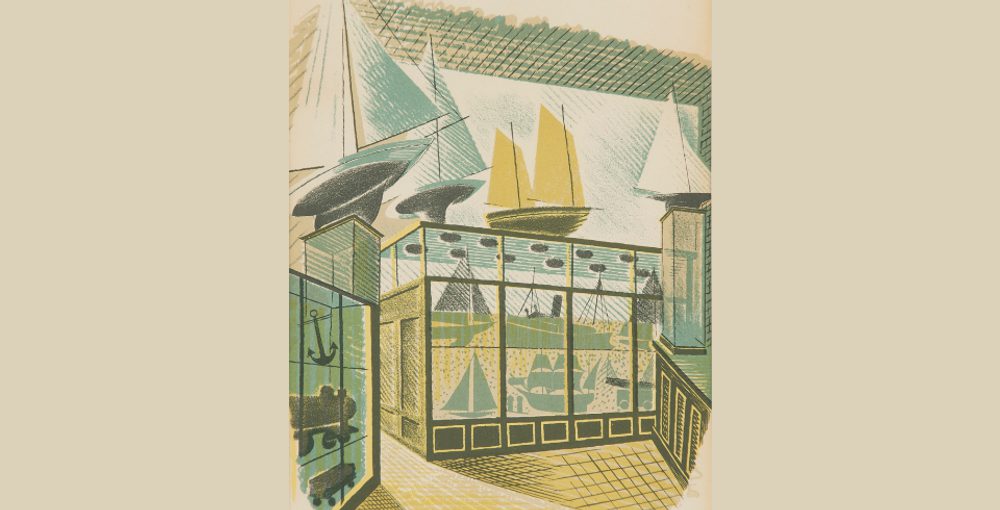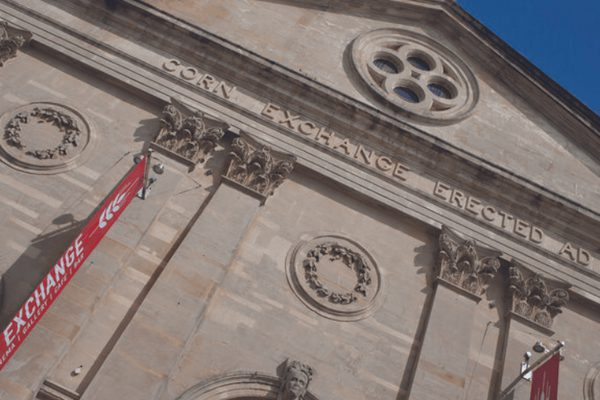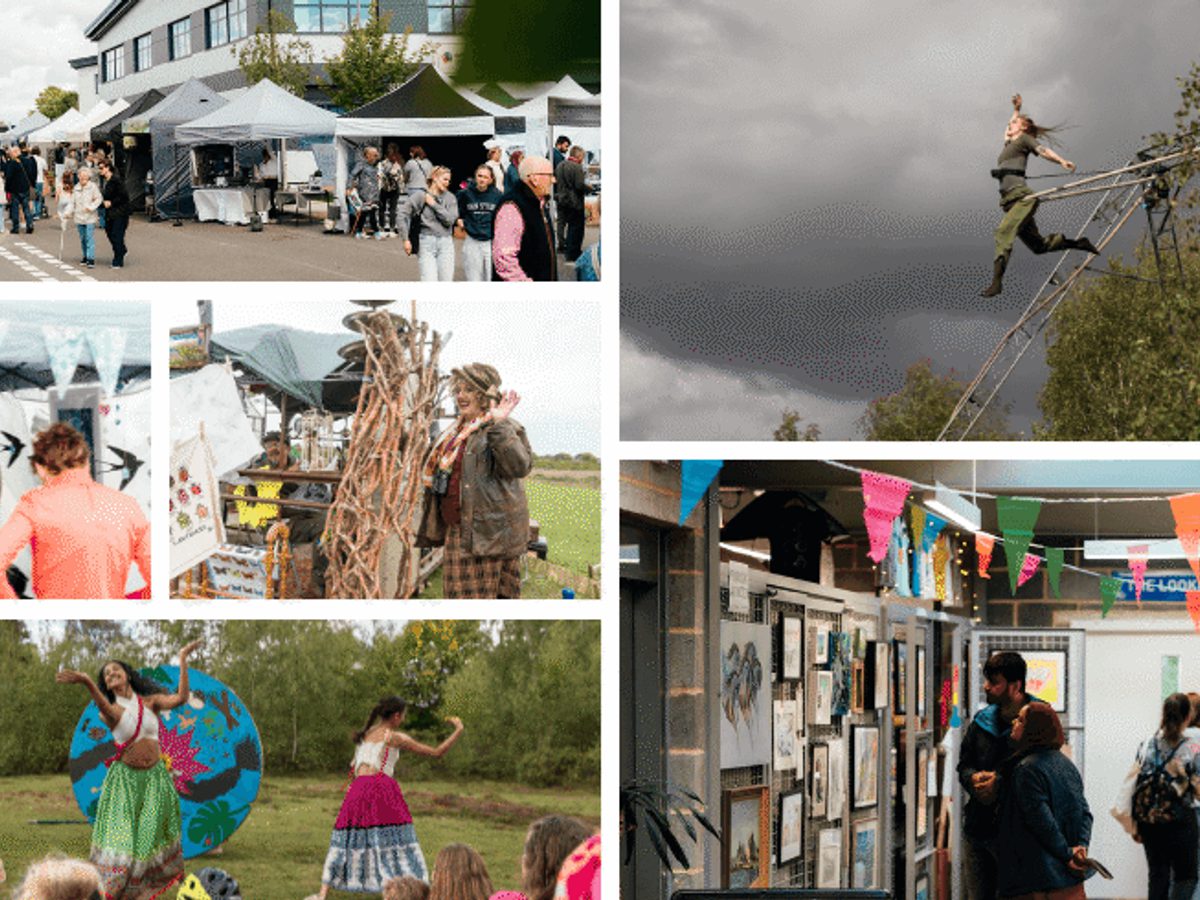Discover British Printmaking's Golden Age

On loan from the prestigious Ingram Collection, Lines of Influence showcases how twentieth-century printmakers shaped British art and design.
The Base Greenham are delighted to present Lines of Influence: Twentieth Century British Printmaking (Friday 3 October – Sunday 16 November), an exhibition that charts the creativity and innovation of the artists who helped define a British visual language in the last century. Featuring over fifty works from the Ingram Collection, the exhibition brings into focus the dual role of printmaking as both a medium of communication and a form of refined personal expression.
The list of incredible artists included within the exhibition begins with C.R.W. Nevinson, one of the most prominent war artists of the early twentieth century. The nostalgic charm of pre-World War II Britain is portrayed in Eric Ravilious’ High Street series, published by Country Life Books in 1938. These lithographs depict traditional shopfronts from across the country, transforming everyday scenes into poetic records of a vanishing way of life.
The interwar years also saw the rise of the Grosvenor School, where artists such as Sybil Andrews and Cyril Power pioneered a bold, modernist approach to linocut. Their dynamic images of sport, transport and city life show depth of movement and rhythm, capturing the excitement of an age defined by speed, machinery and the bustle of modern urban life. Their use of simplified forms and vibrant colours helped reimagine printmaking as a modern medium, capable of representing the pace of twentieth-century life.
Edward Bawden, one of Britain’s most celebrated designers, is represented in the exhibition through works that highlight his versatility and wit. Bawden’s playful use of colour and bold patterns blurred the boundaries between commercial art and fine art. From murals and book illustrations to advertising and product packaging, his influence shaped the look of mid-century British graphic design, while his prints continue to resonate for their charm.
The exhibition also shines a light on artists better known for their work in sculpture, including Henry Moore, Lynn Chadwick and Elisabeth Frink. These artists used printmaking as an experimental space, translating three-dimensional forms into striking works on paper. Moore’s studies reveal his ongoing fascination with the human figure, Chadwick’s prints extend his exploration of angular, geometric abstract work, while Frink’s etchings and lithographs convey the same sense of vitality and presence that defined her sculpture. For these artists, printmaking offered a way to expand their ideas and make them accessible to broader audiences beyond the confines of the gallery or studio.
Together, these diverse works illustrate how twentieth-century British printmakers elevated their craft beyond reproduction, shaping a cultural aesthetic that bridged art, design and daily life. Lines of Influence reveals how prints captured the spirit of their time and how their legacy continues to inform visual culture today.
Lines of Influence: Twentieth Century British Printmaking will run at The Base Greenham from Friday 3 October to Sunday 16 November, open Tue – Sun, 10am - 5pm.
You can find out more here:
Take a look at some exhibition related events:
Main Image Credit: Eric Ravilious (1903-42), Model Ships and Railways, 1938, lithograph in colours [detail]. Courtesy of The Ingram Collection





